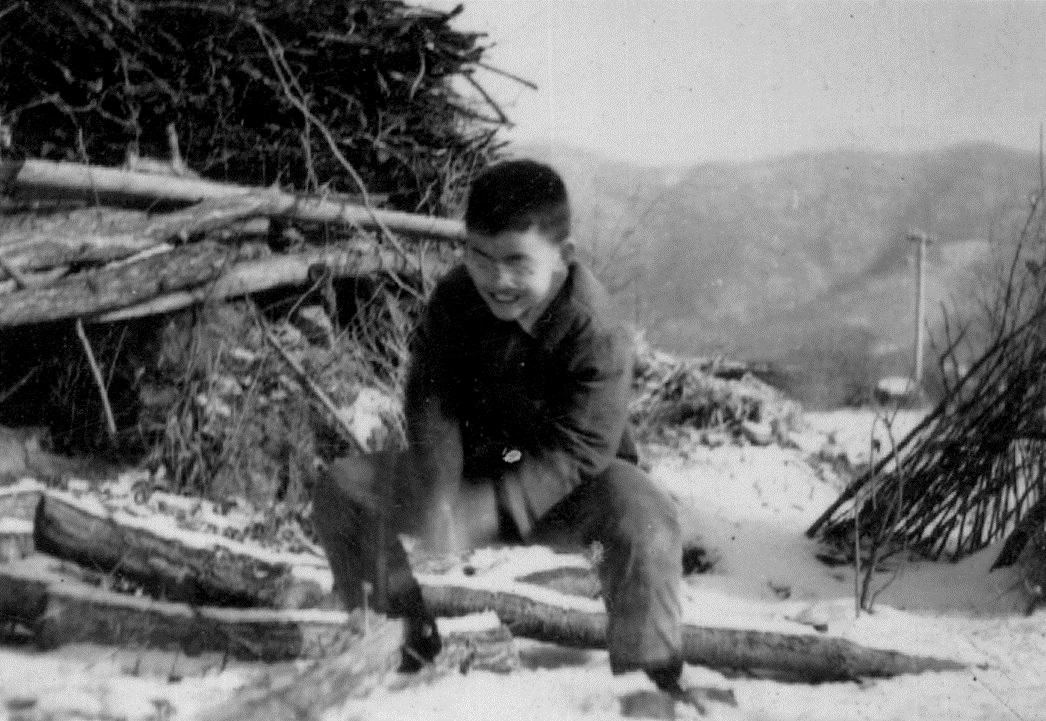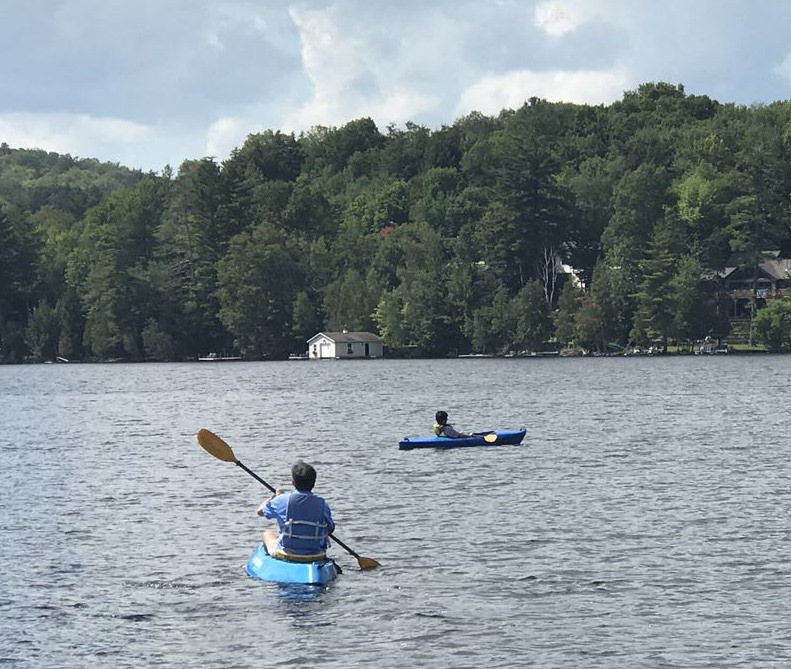Da-Neng Wang, professor at New York University (NYU) School of Medicine’s Skirball Institute of Biomolecular Medicine, grew up in China during the Cultural Revolution, a 10-year period of turbulence under the country’s leader Mao Zedong. Wang was born in Benxi, a coal and iron mining city, but he moved to the countryside in 1969 when his parents, who were medical doctors, were sent there for re-education. “Although my parents’ careers came to a stop, I actually enjoyed the four years in the countryside. Between school days, I helped the farmers with their work in the fields. I played in the mountains and river with friends, gathered food for our chickens and ducks, carried water from the well for cooking, and cut trees and chopped wood for heat in the winter,” he shares. “These experiences taught me a lot about life and friendship.”
High schools, colleges, and universities were closed during the Cultural Revolution, so Wang attended just four and a half years of middle and high school combined. “Physics was a favorite subject of mine, largely because the physics teacher made us realize the power of the subject to explain and predict how the natural world works, often in elegant ways,” he says. “In 1976, the Cultural Revolution ended, and the school was able to teach seriously again. In the final year before graduation, we probably learned more than in the first three and a half years combined.”
Universities reopened in 1978. Wang passed the entrance exam and enrolled at the Northeastern University in Shenyang, where he majored in metal physics, a combination of physical metallurgy and solid state physics. “Despite large differences in experience and age — the students were graduates from the last 10 or 12 years and most had previously worked in factories or in the countryside,” he explains, “we all shared the goal of making up the time we lost, and mostly studied six and a half days a week.”
After college, he entered the graduate school of the Chinese Academy of Science to pursue a master’s degree in the lab of Kehsin Kuo, a Swedish-trained crystallographer who specialized in high-resolution electron microscopy (EM). “He was a father figure to many of us, and he inspired us to think creatively and do the best science we could,” Wang says. “My project was to study crystal defects in alloys by directly observing the crystal lattice and its atoms using high-resolution electron microscopy. Kehsin wondered, given the high resolution of EM, why can’t one see atoms in biological macromolecules? Therefore, after I finished my master’s thesis, he made arrangements for me to go to Sweden, to learn three-dimensional EM image reconstruction of proteins, which set me on the path to structural biology.”
Wang arrived in April 1985 as a PhD student in Sven Hovmöller’s lab at the University of Stockholm. “Sven was very kind and generous. I read my first biology textbook while in his lab. Not only did he teach me so much about science, he also sent me around to the various continents to attend scientific conferences, which opened my eyes to the world,” he says.
For his postdoc, he joined Werner Kühlbrandt’s group at European Molecular Biology Laboratory (EMBL), Heidelberg. There he worked on determining the structure of the plant light-harvest chlorophyll-protein complex II (LHC-II), using a type of cryo-electron microscopy — electron crystallography — from two-dimensional crystals. “This was around the time when Richard Henderson at the MRC Laboratory of Molecular Biology was about to finish the bacteriorhodopsin structure, which he published at 3.5 Å resolution in 1990. We were following in Richard’s and Nigel Unwin’s footsteps,” he says. “With help from Yoshinori Fujiyoshi, then at the Protein Engineering Research Institute in Osaka, in 1994 Werner and I were able to solve the LHC-II structure at 3.4 Å resolution. The resolution was high enough to allow us to trace the amino acid side chains and to visualize a dozen chlorophyll and two lutein molecules, which told us a lot about how plants harvest sunlight for photosynthesis.”
Reinhart Reithmeier from the University of Toronto introduced Wang to membrane transporters. “While I was still working on the structure of LHC-II in Werner’s lab at EMBL, Reinhart came to Heidelberg to visit. Over a beer, Reinhart convinced me that membrane transporters, particularly his favorite, the anion exchanger 1 (AE1), would be worthy targets for structure determination,” he shares. “After returning to Toronto, he started shipping purified AE1 samples to Heidelberg. I did manage to get a low-resolution EM structure of AE1. When I left Werner’s group to start my own lab at NYU, he generously let me take the project with me. Since then, my lab has been focusing on membrane transporters.”
Over the years, members of Wang’s lab have crystallized and solved the atomic structures of a number of proteins. “One of them is the glycerol-3-phosphate transporter structure that we solved in 2003 — one of the first two structures determined from the major facilitator superfamily (MFS) — the other one by the lab of Ron Kaback at UCLA. The MFS family is the largest secondary transporter family; the human genome contains over 100 members and E. coli more than 70. These members transport anything small and hydrophilic across the cell membrane. Our crystal structure helped a lot of investigators with work on their favorite MFS proteins,” he explains. Another was the bacterial dicarboxylate transporter VcINDY, the human homolog of which is involved in epilepsy in newborns and obesity in adults. “With such structural information in hand, we often collaborate with friends who use complementary techniques to look at the system from multiple angles, which is great fun,” Wang says.
Joanne Lemieux, University of Alberta, was Wang’s first research technician, who helped him set up his lab at NYU in 1995. After working together for two years, he supported her decision to pursue a PhD, and she became his first PhD student. “Da-Neng’s most memorable quality is his caring attitude for his team of people in the lab. He fostered teamwork and collaborative learning,” she shares. He also taught Lemieux a valuable lesson that has helped her throughout her career. “As a junior scientist I was often caught up in the details of the methodologies, but his most sage advice was to focus on the bigger picture,” she says. “He encouraged me to ask what contribution my research was making to the field.”
Going forward, Wang hopes that his lab will help find ways to apply single-particle cryo-EM structure determination to small proteins. In addition, he and several labs from different areas of biophysics have come together to explore how membrane transporters work in real time — to push their understanding to a level similar to that of ion channels.
Outside of the lab, Wang enjoys spending time with his family and participating in less-than-adventurous hobbies. “I wish I could say that I climbed Everest or have run a marathon, but my life is a lot less exciting,” he jokes. “I do enjoy travel and seeing different parts of the world. On weekends, I hike a bit in New Jersey or upstate New York. During my daily commute to work, I read history books and biographies, both science and non-science related ones. Of course, I also like art. All crystallographers like art.”